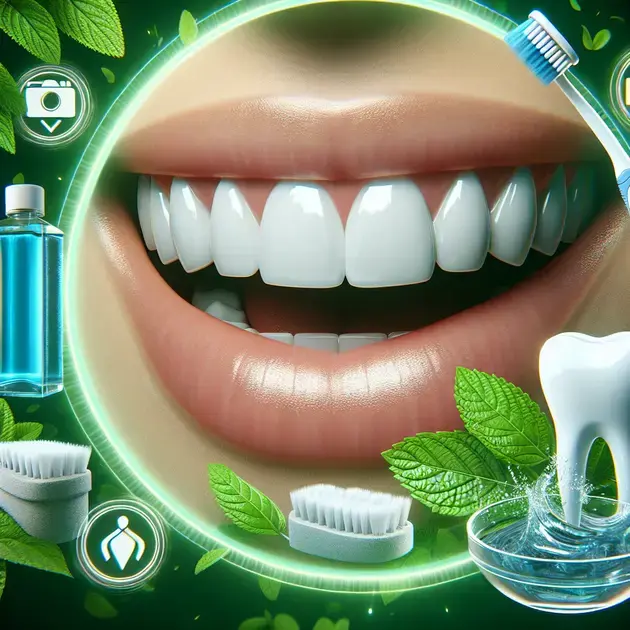Preventing tooth decay plays a crucial role in maintaining a healthy smile and overall oral health. With advancements in dental care, there are now more effective strategies and tools available to combat this common oral health issue. By understanding the causes of tooth decay and implementing preventive measures, you can enjoy a bright and healthy smile for years to come.
One of the key factors in preventing tooth decay is maintaining a proper oral hygiene routine. Brushing your teeth twice a day with fluoride toothpaste, flossing daily, and visiting your dentist regularly for check-ups and cleanings are essential steps in keeping your teeth healthy and free from decay. Additionally, watching your diet and reducing sugary and acidic foods can also help prevent tooth decay and promote a beautiful smile.

Effective Strategies for Preventing Tooth Decay
Preventing tooth decay is crucial for maintaining good oral health. One effective strategy is to brush your teeth at least twice a day with a fluoride toothpaste. Additionally, using dental floss to clean between your teeth can help remove plaque and prevent cavities. To ensure thorough cleaning, consider incorporating a mouthwash into your daily oral hygiene routine. Websites like Colgate.com offer detailed guides on proper brushing and flossing techniques.
Another important strategy is to maintain a healthy diet low in sugary and acidic foods. Consuming foods rich in calcium and vitamin C can promote strong teeth and gums. Avoiding excessive snacking between meals can also contribute to preventing tooth decay. The American Dental Association’s website provides valuable information on diet and oral health.
Regular visits to the dentist for check-ups and professional cleanings are essential in preventing tooth decay. Dentists can spot early signs of decay and provide treatments to address them. Websites like ADA.org offer tools to help you find a reputable dentist in your area for regular dental visits.
It’s also important to limit the consumption of sugary beverages and practice good oral hygiene habits throughout the day. Drinking water instead of sugary drinks and chewing sugar-free gum can help stimulate saliva production and wash away food particles. Websites like MouthHealthy.org provide tips on maintaining a healthy oral environment.
By following these effective strategies for preventing tooth decay and incorporating them into your daily routine, you can significantly reduce the risk of developing cavities and maintain a healthy smile for years to come.
The Importance of Proper Oral Hygiene
Proper oral hygiene is essential for overall health and well-being. One fundamental aspect of oral hygiene is brushing your teeth twice a day for two minutes each time. Using a soft-bristled toothbrush and fluoride toothpaste is recommended for effective cleaning. Websites like OralB.com offer tutorials on proper brushing techniques.
In addition to brushing, flossing daily is crucial for removing plaque and food debris between teeth. Incorporating mouthwash into your routine can help kill bacteria and freshen breath. Websites like Crest.com provide information on the benefits of using mouthwash as part of your oral care routine.
Regular dental check-ups are vital to maintaining proper oral hygiene. Dentists can assess your oral health, perform professional cleanings, and address any issues early on. Websites like WebMD.com offer insights on the importance of regular dental visits for oral hygiene.
Avoiding tobacco products and following a balanced diet rich in fruits, vegetables, and lean proteins can also contribute to good oral hygiene. Limiting sugary snacks and beverages can help prevent tooth decay and gum disease. Websites like MayoClinic.org provide resources on how diet and lifestyle choices impact oral health.
By understanding the importance of proper oral hygiene and following a consistent routine, you can protect your teeth and gums from decay, maintain fresh breath, and promote overall oral health.
Tips for Maintaining a Healthy Smile
Maintaining a healthy smile goes beyond just brushing and flossing. One tip is to replace your toothbrush every three to four months or sooner if the bristles are frayed. Using a toothbrush with an appropriate size and shape can help reach all areas of your mouth. Websites like Philips.com offer a range of toothbrush options for maintaining oral health.
Another tip is to consider using a tongue scraper to remove bacteria and food debris from the surface of your tongue. This can help prevent bad breath and enhance overall oral hygiene. Websites like Waterpik.com provide information on the benefits of tongue scraping for oral health.
Eating a balanced diet that includes crunchy fruits and vegetables can help clean your teeth naturally and promote saliva production. Chewing sugar-free gum after meals can also stimulate saliva flow and reduce the risk of cavities. Websites like ADA.org offer insights on diet and oral health for maintaining a healthy smile.
Avoiding habits like nail-biting, teeth grinding, and using teeth as tools can help prevent damage to your teeth and maintain a bright smile. If you participate in contact sports, consider wearing a mouthguard to protect your teeth from injuries. Websites like Colgate.com provide information on oral habits to avoid for a healthy smile.
By incorporating these tips into your daily routine and being mindful of your oral habits, you can achieve and maintain a healthy smile that radiates confidence and overall well-being.

**Promoting Gum Health for a Brighter Smile**
1. Brushing and Flossing
Step 1: Brushing
One of the most important habits for promoting gum health and achieving a brighter smile is regular brushing and flossing. Brushing your teeth at least twice a day helps remove plaque and bacteria that can lead to gum disease. Use a soft-bristled toothbrush and fluoride toothpaste to gently clean all surfaces of your teeth and along the gumline.
Step 2: Flossing
In addition to brushing, flossing plays a crucial role in maintaining gum health. Flossing removes food particles and plaque from between the teeth and along the gumline, where your toothbrush cannot reach. Make sure to floss once a day, gently guiding the floss between each tooth and hugging the floss against the tooth surface to remove debris.
Step 3: Rinse
After brushing and flossing, rinse your mouth with an antibacterial mouthwash to help reduce bacteria and freshen your breath. Choose a mouthwash that is alcohol-free to avoid drying out your mouth and causing further oral health issues.
Step 4: Regular Dental Check-ups
Visit your dentist regularly for check-ups and professional cleanings. Your dentist can spot early signs of gum disease and provide treatment to prevent further complications. Regular cleanings help remove hardened plaque (tartar) that cannot be removed by brushing and flossing alone.
Step 5: Healthy Diet
Avoid sugary and acidic foods that can contribute to gum disease and tooth decay. Instead, opt for a diet rich in fruits, vegetables, lean proteins, and whole grains. Drinking plenty of water also helps wash away food particles and bacteria that can harm your gums.
2. Avoiding Tobacco
Tobacco use is a significant risk factor for gum disease and oral cancer. Quit smoking or using smokeless tobacco products to improve your gum health and overall well-being. Tobacco stains can also affect the brightness of your smile, so quitting can help achieve a brighter, healthier smile.
3. Stress Management
Chronic stress can weaken your immune system and make you more susceptible to gum disease. Practice stress-reducing techniques such as deep breathing, meditation, or yoga to promote overall health and gum health. Finding healthy ways to manage stress can positively impact your gum health and contribute to a brighter smile.
Conclusion
Ensuring healthy gums for a brighter smile involves a combination of consistent oral hygiene practices. Brushing and flossing are fundamental steps in preventing gum disease and maintaining oral health. By brushing at least twice a day with a soft-bristled toothbrush and using fluoride toothpaste, you can effectively eliminate plaque and bacteria that threaten your gums. Complementing brushing with daily flossing helps remove debris from hard-to-reach areas, promoting overall gum health.
Moreover, incorporating rinsing with an alcohol-free mouthwash into your oral care routine after brushing and flossing can further reduce bacteria and enhance oral freshness. Regular dental check-ups are essential for early detection and treatment of gum disease, as professional cleanings can eliminate tartar buildup that regular brushing and flossing may miss. Prioritizing a healthy diet rich in fruits, vegetables, lean proteins, and whole grains, while avoiding sugary and acidic foods, supports gum health and overall well-being.
Quitting tobacco and managing stress are additional key factors in promoting gum health. Tobacco use is a significant risk factor for gum disease, oral cancer, and tooth discoloration. By quitting smoking or using smokeless tobacco products, you can greatly improve your gum health and achieve a brighter, healthier smile. Managing stress through techniques like deep breathing, meditation, or yoga helps strengthen your immune system and reduces susceptibility to gum disease, ultimately contributing to a brighter smile and better overall health.